The key to the replication of archives and ancient books is the restoration of details and colors. A good simulation replica should retain as much detail as possible from the original, so that not only can the meaning of the work be read from these details, the vicissitudes of history can be read, and even I can understand the mood of the author at the time of creating this work. The more details are retained, the more realistic the simulation replica is, the more stereoscopic it is, the more expressive it is. The archive and ancient book simulation replication is a very complicated system engineering, which can be divided into three parts: image acquisition, image correction and image output. Image acquisition is a very important part. It is necessary to minimize the loss of color and medium, collect original image information as much as possible, and restore the original surface material, stereo effect, spot color effect and other details, consistent throughout the scan range. Color, quality and clarity. With the maturity of color management systems, color is fully controllable. It is more difficult to reflect the details as much as possible, especially the precious files and ancient books that are bound into a book. This paper introduces the new scanning technology of 3D flattening in detail to solve the problem of the restoration of precious archives and ancient books.
I. Overview
It is almost impossible to scan a precious archive and an ancient document that is undistorted and undistorted. The successful development of 3D flattening technology has completely solved this problem. 3D flattening technology is a professional scanner company and the German Otto von Glick University electronic signal processing and communication technology research and development, the traditional scanning technology has revolutionized innovation, using advanced software and hardware technology for integration, Perfectly flatten the seams in the book and correct the deformation problem. This technology has been successfully applied to professional color simulation copy book scanners.
Second, the mathematical principle of 3D flattening technology
For a long time in the field of scanner technology, the method of deforming and modifying the precious archives and ancient documents bound in a book during the scanning process is nothing more than calculating the distribution of light on the page or the actual surface contour or straightening the edge of the page. Corrected. Completely solved with precise mathematical operations and software, using the "straight" and "smooth" methods to correct the distorted lines and text. This method is a very effective tool for eliminating the spine of the spine, but it often has its limitations in practice. If the outline of the book is inserted into the note or the page is incomplete or the edge is broken, it is difficult to flatten or even flatten. As shown below:
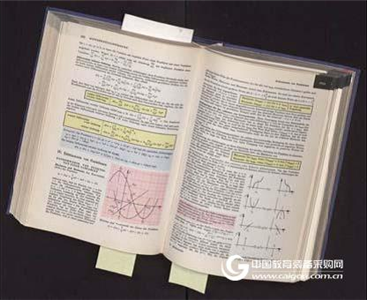
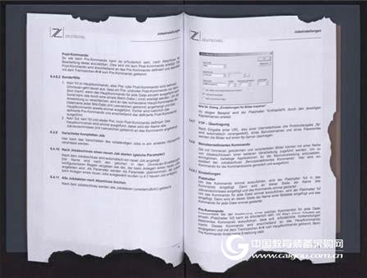
Inserting a note or page damage affects the quality and accuracy of the flattening
Note: Only when the upper and lower contour lines of the book can be fully confirmed, software and mathematical operations can be accurately corrected and flattened.
The 3D flattening technology is based on a combination of hardware and software that utilizes a stereo vision system to capture the 3D contour of the page during the scanning process. In addition to the commonly used high-resolution linear array scanning head CCD (the yellow part of the picture), it also uses a standard USB digital camera that captures high-definition 3D data with VGA resolution, which functions as a surface or area array model digital camera (Figure Color part).
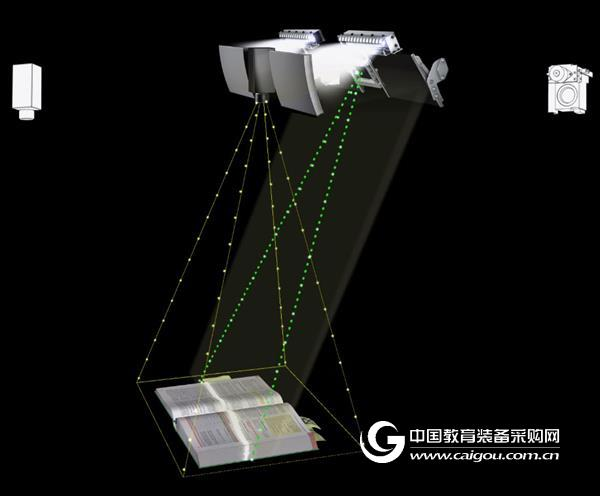
The two imaging systems capture images simultaneously (as shown below), where the line scan CCD moves synchronously with the scanning source to obtain a clear, reproducible image, while the HD digital camera uses a moving scanning source through a fixed area array model. Obtain the image sequence record at a predetermined frame rate, then import the two images into the corresponding image analysis software, and reconstruct the 3D scan page outline through special mathematical calculations.
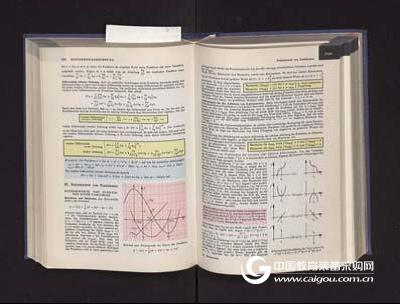
Image obtained by line scan CCD
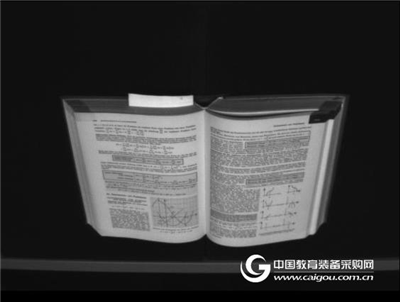
Image captured by area array
High-quality corrections can be achieved by using two calibrated imaging systems simultaneously from different angles. The 3D flattening technique successfully overcomes the errors and effects of pure mathematical methods in blurring or book edge breakage. A combination of line scan and area array capture produces a virtual 3D model of the book surface on the scanning platform, and calculates the contour of the 3D surface from the established coordinate system as the calibration of the entire system.

Due to the use of real 3D data, 3D flattening technology no longer relies solely on margins to determine position and format, but rather when height data appears unequal (as shown above), structural analysis is automatically added to determine margins. Therefore, the 3D flattening technology can separate the two pages of the book very accurately, and can completely obtain all the details of the precious archives and ancient documents that are bound into a book, and at the same time protect the original.
Third, the practical application of 3D flattening technology in the simulation replication acquisition
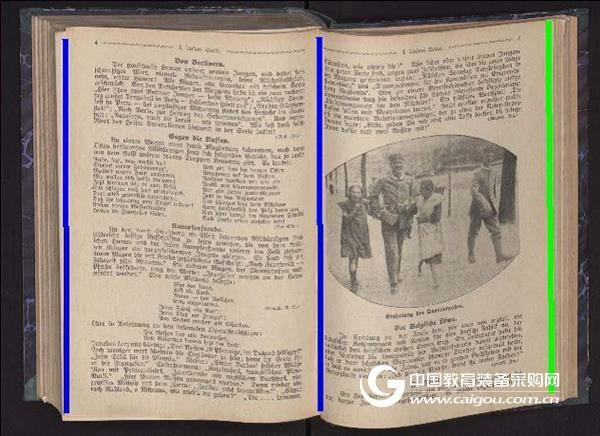
Take ancient books as an example (as shown in the above figure)
Scanning with two scanners to obtain the image shown below
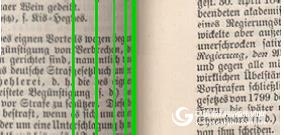
The effect of ordinary scanning technology
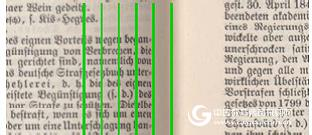
With 3D flattening technology
As can be seen from the above two images, the 3D flattening technique automatically corrects the distortion generated by the characters in the ancient Chinese characters and the size of the automatically recognized page. As a result, the characters deformed near the middle of the book are directly and correctly arranged during the scanning process. In a straight line, pages and pages are automatically separated correctly. The 3D flattening technology makes the characters that are deformed near the middle of the book flat and flat, and the words are evenly averaged, eliminating the shadow of the middle seam, etc. Even if the characters are hidden in the book, they can be captured clearly. This kind of image effect provides all the original details of the original image correction link and image output link, which lays a solid foundation for making a perfect simulation copy.
In summary, the ordinary image acquisition equipment can not meet the simulation copy of precious archives and ancient books, and the 3D flattening technology can collect fine and complete original information. Therefore, the simulation copy of precious archives and ancient books requires more professional images. Acquisition equipment, a professional-grade simulation copy scanner with 3D flattening technology. At present, in the domestic archives industry, most users have adopted professional-grade scanners with 3D flattening technology (such as the German professional number simulation copy scanner) for image reproduction. 3D flattening technology will also continue to improve, make full use of intelligent systems, automatically detect and utilize the automatic detection of the scanning area (ROI) for the location and size of precious archives and ancient books, to provide users with more perfect image details.
We are a Professional manufacturer of 660nm 850nm Red Light Therapy manufacturer is located in China, including Red Light Therapy Panel,Skin Beauty Led,, etc
660nm 850nm Red Light Therapy,Red Light Therapy Panel,Skin Beauty Led
Shenzhen Bonliter Optoelectronic Co., Ltd. , https://www.szbonliter.com